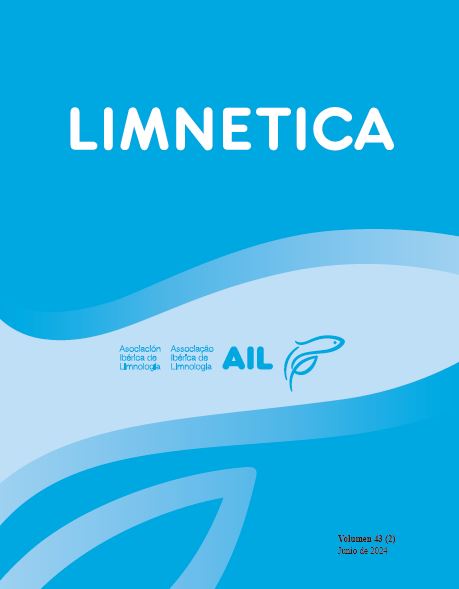Acute toxicity and genotoxicity of the S-metolachlor-based herbicide Dual Gold® on Leptodactylus luctator (Hudson, 1892) tadpoles (Anura: Leptodactylidae)
Resumen
Herbicides used in agriculture and their metabolites are frequently detected in surface water bodies, where they can persist and cause adverse effects on aquatic organisms. The aim of this study was to evaluate the acute toxicity and genotoxic effects of the S-metolachlor (SM)-based herbicide Dual Gold® (DG®), on Leptodactylus luctator tadpoles (Anura: Leptodactylidae). To assess the toxicity of the herbicide, including the median lethal concentration (LC50) at 24h, the no-observed-effect concentration (NOEC), and the lowest-observed-effect concentration (LOEC), tadpoles were exposed to five nominal concentrations of DG® (5.0, 6.2, 7.8, 9.8, and 12.2 mg/L), and to dechlorinated water as a negative control (NC). The LC5024h of DG® was 7.0 mg/L, the NOEC was 5.0 mg/L and the LOEC=6.2 mg/L. L. luctator tadpoles were sensitive to the herbicide, reaching 100% mortality after 24 h of exposure to the highest concentration tested (12.2 mg/L). To evaluate the potential genotoxicity of the herbicide, the frequencies of micronuclei (MN) and other erythrocyte nuclear abnormalities (ENA) were determined in larvae exposed to three nominal concentrations of DG® (1.0, 5.0, and 6.2 mg/L) for 48 and 96 h. The frequencies of MN and ENA were compared with a positive control (40 mg/L of Cyclophosphamide) and a negative control. The frequencies of MN and ENA in the erythrocytes of tadpoles exposed to the test concentrations of DG® and Cyclophosphamide were significantly higher than in the negative control group at both 48 and 96 h (with the only exception of MN at 1.0 mg/L at 48 h). Our results confirm the genotoxic and cytotoxic effects of this widely used herbicide in agriculture, a fact that represents a potential risk to amphibians that develop in ponds associated with or immersed in agroecosystems.
Descargas
Publicado
Número
Sección
Licencia
Los autores que publican en esta revista están de acuerdo con los siguientes términos:
- Limnetica está bajo una licencia de Creative Commons Atribución-NoComercial 4.0 Internacional.
b. Los autores pueden establecer por separado acuerdos adicionales para la distribución no exclusiva de la versión de la obra publicada en la revista (por ejemplo, situarlo en un repositorio institucional o publicarlo en un libro), con un reconocimiento de su publicación inicial en esta revista.
c. Se permite y se anima a los autores a difundir sus trabajos electrónicamente (por ejemplo, en repositorios institucionales o en su propio sitio web) antes y durante el proceso de envío, ya que puede dar lugar a intercambios productivos, así como a una citación más temprana y mayor de los trabajos publicados (Véase The Effect of Open Access) (en inglés).


